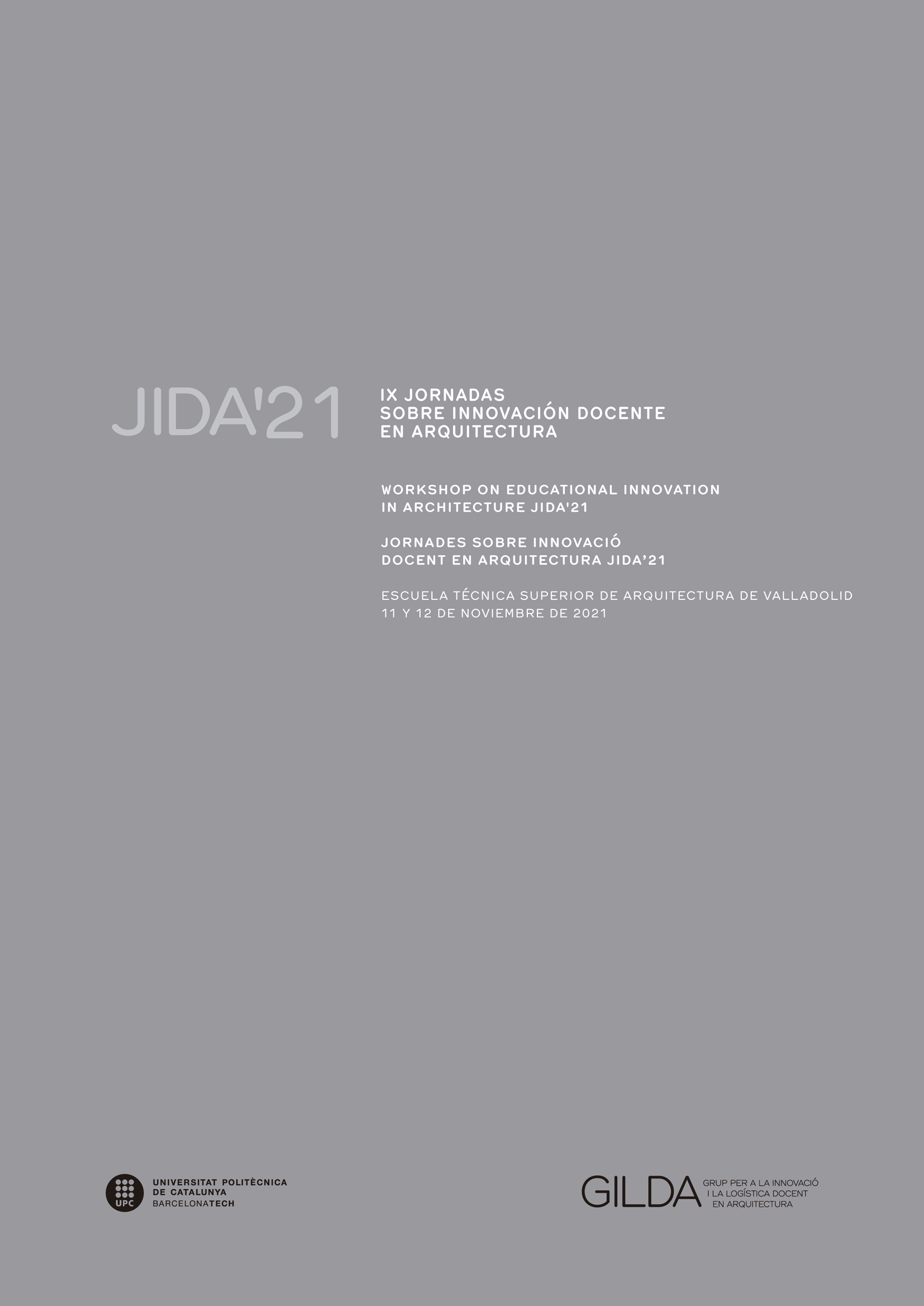How to integrate the creation of a materials library into teaching
DOI:
https://doi.org/10.5821/jida.2021.10566Keywords:
materials library, materials collection, construction, databaseAbstract
In a time determined by the rise of virtual models, it seems appropriate to recall the sensory nature of architecture. In this sense, the materials library is presented as a basic tool to enjoy the physical experience with the materials that make up the architecture. The communication describes how to integrate the creation of a new collection in the teaching of the Degree in Architecture. For this purpose, a literature review of recent research has been conducted. A theoretical framework of minimum requirements has also been established, highlighting the strengths, but also the difficulties associated with the operation of these type of resources. Finally, a proposal to implement the project by using active learning methods to involve the students from the beginning is described.
References
ASHBY, M. y JOHNSON, K. (2009). Materials and design: the art and science of material selection in product design. Oxford: Butterworth-Heinemann.
AKIN, F. y PEDGLEY, O. (2016). “Sample libraries to expedite materials experience for design: A survey of global provision” en Materials and Design. 90, p. 1207-1217. <https://doi.org/10.1016/j.matdes.2015.04.045> [Consulta: 25 de julio de 2021]
CORTÉS, J.A. (2003). Nueva consistencia: Estrategias formales y materiales en la arquitectura de la última década del siglo XX. Valladolid: Universidad de Valladolid, Secretariado de Publicaciones e Intercambio Editorial.
DANTAS, D. y BERTOLDI, C.A. (2016). “Sistema de catalogação e indexação de amostras de materiais orientado a projetos de design para uso em materiotecas” en DATJournal. vol. 1, issue 2, p. 62-75. <https://datjournal.anhembi.br/dat/article/view/29/22> [Consulta: 10 de julio de 2021]
FELDER, R.M. y BRENT, R. (1994). Cooperative learning in technical courses: Procedures, pitfalls, and payoffs. ERIC Document Reproduction Service, p.7. <https://files.eric.ed.gov/fulltext/ED377038.pdf> [Consulta: 14 marzo 2021]
LABARTA AIZPÚN, C. (2016). “A vueltas con la materia y la técnica. Una conversación con Miguel Ángel Alonso del Val” en ZARCH, vol. 4.
LORD, B. y LORD, G.D. (2010). Manual de gestión de museos. Barcelona: Ariel Patrimonio Histórico.
MARTÍNEZ SANTA-MARÍA, L. (2019). Contacto: Indeterminación ante la enseñanza de la arquitectura. Madrid: Conarquitectura ediciones, p. 49.
MIODOWNIK, M. (2003). “The case for teaching the arts” en Materials Today. vol. 6. p.36-42
NAVARRO, D. y LANZÓN, M. (2018). “Materiales de construcción. Estrategias para su enseñanza en las escuelas de arquitectura” en Estoa, Revista de la Facultad de Arquitectura y Urbanismo de Cuenca. vol. 4, nº 14, p.45-53.
NAVARRO, D.; LANZÓN, M.; y TATANO, V. (2018). “La biblioteca de materiales como recurso didáctico” en García-Escudero, D. y Bardí Milà, B. eds. En VI Jornadas sobre Innovación Docente en Arquitectura (JIDA’18), Zaragoza. Barcelona: UPC IDP GILDA. Disponible en: <https://revistes.upc.edu/index.php/JIDA/article/view/5443> [consulta: 14 marzo 2021]
PALLASMAA, J. (2014). “Los ojos de la piel: la arquitectura y los sentidos”. Barcelona: Gustavo Gili.
PEDGLEY, O.; ROGNOLI, V.; y KARANA, E. (2016). “Materials experience as a foundation for materials and design education” en International Journal of Technology and Design Education, vol. 26, issue 4, p. 613-630. <https://link.springer.com/article/10.1007/s10798-015-9327-y> [Consulta: 4 agosto de julio de 2021]
ROGNOLI, V. (2005). “Oltre le materioteche” en DIID Disegno Industriale Industrial Design, p. 86-91.
SABIN DÍAZ, P. y BLANCO LORENZO, E.M. (2017). “La axonometría constructiva en arquitectura. Tectónica y su influencia en los TFC en la ETSAC” en García-Escudero, D. y Bardí Milà, B. eds. En: V Jornadas de Innovación Docente en Arquitectura (JIDA’17), Sevilla. Barcelona: UPC IDP GILDA. Disponible en: <https://upcommons.upc.edu/handle/2117/109607> [Consulta 24 mayo de 2021]



















